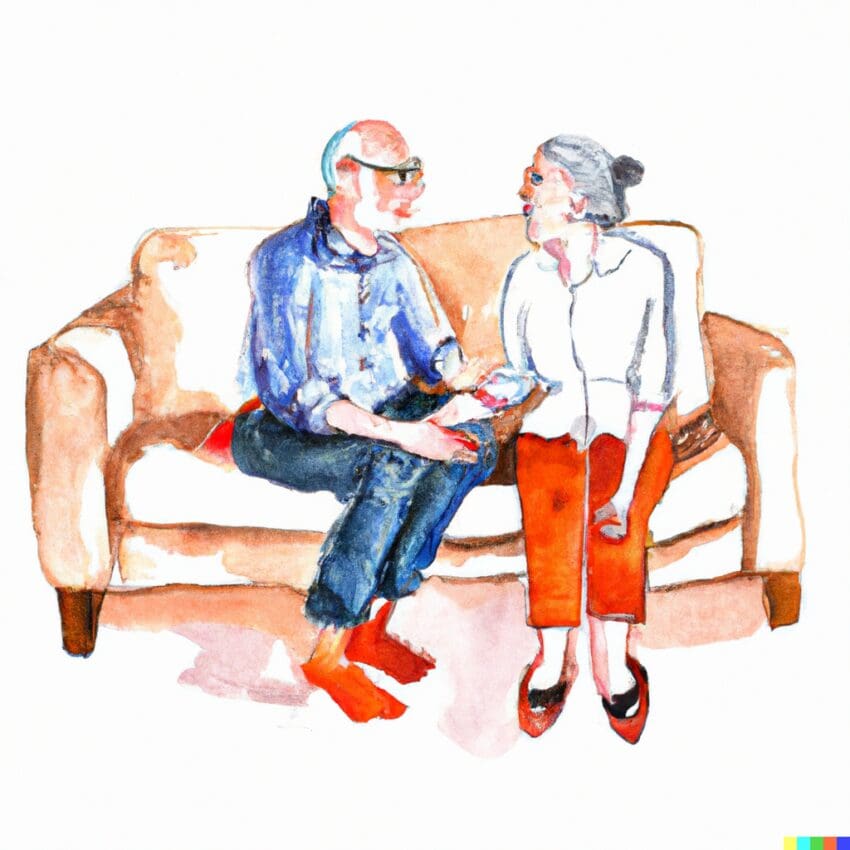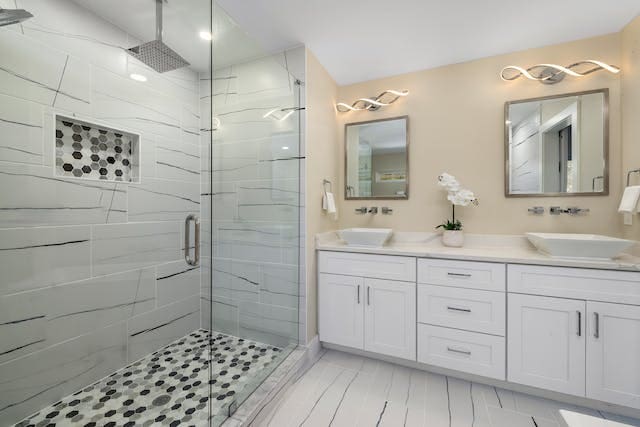The golden years should be enjoyed in the comfort and familiarity of one’s own home. Aging in place is increasingly popular among seniors who prefer living independently. To facilitate this, home modifications for aging in place are essential. These modifications enhance safety and ensure that daily living remains comfortable and manageable. In this blog post, we will get into various modifications that can prepare a home to be a safe place for older folks. From simple additions like grab bars in the bathroom to more extensive changes like stairlifts, these adaptations can greatly impact the quality of life for aging individuals. We aim to provide insightful tips to help you or your loved ones make informed decisions about these modifications.
Key Areas for Modification
When modifying a home for senior living, it’s important to focus on areas that are most utilized and where risks are highest. The entrance and exits are the primary areas to address. Installing ramps in place of stairs, adding sturdy handrails, and checking that walkways are well-lit can prevent falls. Bathrooms are another critical area. Walk-in tubs or showers, strategically placed grab bars, anti-slip mats, and higher toilet seats can significantly improve safety and comfort. Kitchens should also be prepared for ease of use. Lowering countertops and cabinets, installing pull-out shelves, and choosing appliances with simple interfaces can help seniors maintain their independence in cooking and kitchen tasks. In the bedroom, adjustable beds and good lighting are essential. Placing emergency call buttons within easy reach provides an additional safety net.
Home Modifications for Aging in Place: Entrance and Exits
Having safe and easy access to the home is a key aspect of home modifications for aging in place. Entrance ramps should be installed to replace or supplement stairs, providing an easy incline for those using walkers or wheelchairs. Handrails on both sides of walkways offer support and stability. It’s important to ensure that outdoor areas are well-lit to prevent falls during the night. Non-slip flooring is essential, especially in regions prone to rain or snow. Additionally, entryways should be wide enough to accommodate mobility aids, and door handles should be lever-type for easy operation. These simple steps not only enhance safety but also foster a sense of independence, allowing seniors to come and go as they please.
Bathrooms: A Focus on Safety
Bathrooms pose one of the highest risks for falls and injuries. Modifying this space is crucial for safety and comfort. Walk-in tubs or showers with built-in seats offer a safer alternative to traditional bathtubs, minimizing the risk of slips and falls. Installing grab bars near the toilet, shower, and bathtub areas provides support for seniors as they move around the bathroom. Anti-slip flooring is a must, and additional lighting can help in better visibility. For those with more significant mobility issues, consider installing a raised toilet seat or a bidet for added comfort and ease of use. Thoughtful changes in the bathroom can greatly enhance a senior’s daily life, ensuring they can use these facilities safely and independently.
Kitchens: Balancing Functionality and Accessibility
The kitchen, often the home’s heart, must be functional and accessible. Modifications can range from simple changes like replacing cabinet knobs with pull handles to more extensive renovations like lowering countertops and cabinets. Appliances with easy-to-read controls, automatic shut-off features, and front-facing controls can prevent accidents and make cooking less chore. Installing pull-out shelves and lazy Susans in cabinets allows for easy access to kitchen items. Adequate lighting, non-slip flooring, and marked controls for stoves and ovens are also necessary.
Bedrooms: Comfort and Safety
Bedroom changes for seniors focus on ensuring comfort and safety for a restful environment. Adjustable beds are a key addition, allowing for easy height adjustment, which aids in getting in and out of bed and can provide added comfort or health needs. Ample lighting is vital to prevent falls during the night. You should consider installing motion-sensor lights that illuminate the path to the bathroom. Emergency call buttons should be within easy reach, providing peace of mind. Soft, non-slip rugs can prevent falls, while a telephone or intercom system ensures help is just a call away. Additionally, rearranging furniture to create clear pathways can greatly reduce the risk of accidents.
Financial Considerations
Navigating the financial aspects of home modifications for aging in place is an important step. The costs can vary widely, depending on the extent of changes required. It’s crucial to start with a clear budget and prioritize based on immediate needs. Researching funding options can offer some relief; many government programs, non-profits, and insurance plans may cover parts of these costs, especially if they are deemed medically necessary. Tax deductions for home improvements related to medical needs can also be explored. For cost-effective solutions, consider phased modifications over time. It’s advisable to seek quotes from multiple contractors to ensure competitive pricing. Investing in these modifications enhances safety and is also cost-saving in the long run. It prevents expensive accidents and potentially delays or eliminates the need for assisted living facilities.
Working with Professionals
When undertaking home modifications, it’s essential to work with skilled professionals to ensure compliance with the Americans with Disabilities Act. Qualified contractors can provide the necessary expertise for safe and effective modifications. In addition to contractors, for seniors considering relocating to a more suitable residence as part of their aging-in-place plan, professional moving services can be invaluable. Some, like hansenbros.com, offer specialized moving services that cater to the unique needs of seniors, ensuring a smooth road to their new homes. Collaborating with professionals like occupational therapists can also provide tailored solutions, ensuring the home environment perfectly suits the senior’s needs.
In Conclusion
In conclusion, making thoughtful home modifications for aging in place can significantly enhance the safety, comfort, and independence of seniors. By carefully addressing key areas such as entrances, bathrooms, kitchens, and bedrooms and considering financial options, seniors can continue living in their beloved homes with dignity and ease. It’s a proactive approach that safeguards their well-being and brings peace of mind to their loved ones. As we have explored, aging in place can be a truly fulfilling option with the right modifications and expert assistance.
Some stories are best told without a name attached. Whether it’s a firsthand experience, an opinion piece, or a sensitive topic, Cedar Valley Sentinel occasionally publishes content written by anonymous contributors or ghostwriters who wish to remain unnamed. These authors may be local residents, community leaders, or subject matter experts who want to share their perspectives, insights, or concerns with the people of Eagle Mountain, Lehi, Saratoga Springs, Cedar Fort, and Fairfield — without the spotlight.
Every anonymous submission is reviewed and fact-checked by our editorial team to ensure it aligns with our commitment to accurate, community-centered reporting in Northern Utah County.







